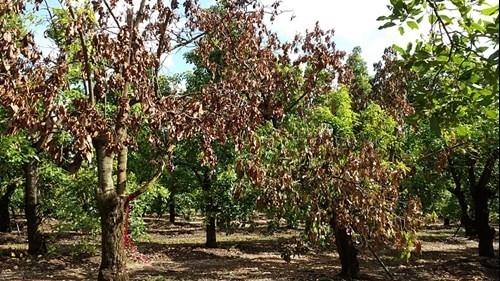The redbay ambrosia beetle, Xyleborus glabratus, and its fungal symbiont, Raffaelea lauricola (Rl), were introduced into Port Wentworth, Georgia, USA, in infested wood packing material from Asia during 2002. This insect-disease complex, commonly called laurel wilt (LW), affects trees in the Lauraceae family and spreads through natural areas by redbay ambrosia beetle movement and anthropogenic movement of infested wood products (e.g., firewood, wood-turners wood, and BBQ smoke-wood). Plant hosts of the redbay ambrosia beetle-Rl complex include at least ten native lauraceous woody species (e.g., redbay [Persea borbonia] and swamp- bay [P. palustris]) in Florida, as well as non-native species such as camphor (Cinnamomum camphora), avocado (P. americana), and potentially California bay (Umbellularia californica). By February 2010, redbay ambrosia beetles were detected in a natural area 21 miles (33.7 km) north of the south Florida avocado production area (125 sq. miles; 324 sq. km) in Miami-Dade County. In 2011, the first confirmed swampbay tree to succumb to LW was documented in this natural area, and by 2012 LW was detected in a commercial avocado grove in Homestead, Florida.
Now everything we know about this disease that affects avocados and other laurel relatives is at one website - articles, videos, webinars, maps. Check it out: https://trec.ifas.ufl.edu/faculty/dr-crane-lw-ab-website/lw-ab/
.png)
.png)
| Home | TREC |
|---|
| Documents | Symptoms of LW-AB Activity | Videos | Extension | Links |
|---|
